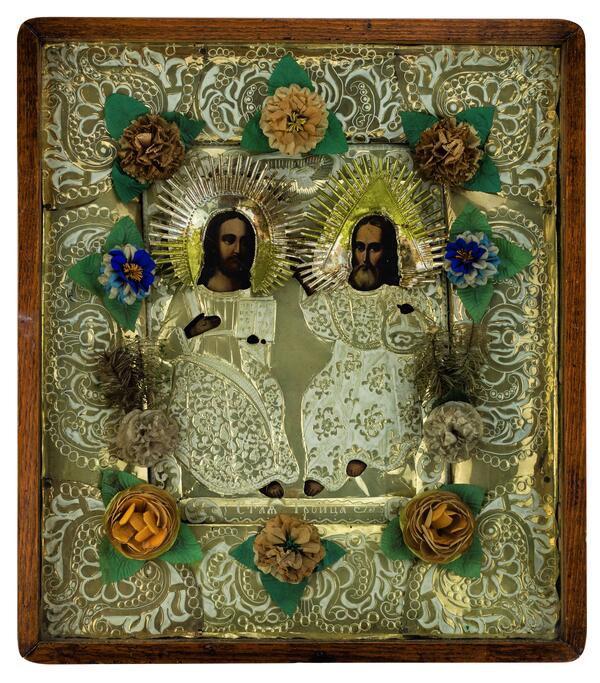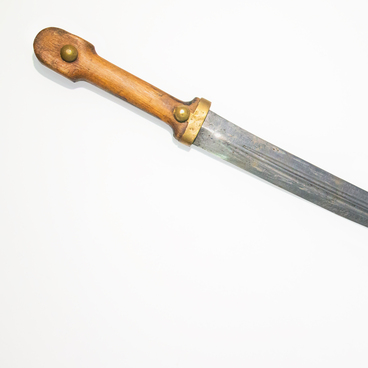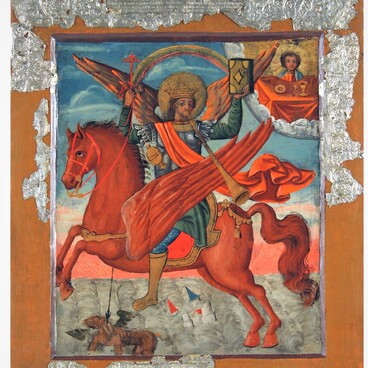In 1776, the Holy Synod of the Patriarchate of Constantinople declared that the Holy Trinity icon depicting God the Father as a gray-haired elder, the Son as a man sitting on a throne at His right hand, and the Holy Spirit as a dove above the throne ‘is a novelty, alien and not accepted by the Apostolic, Catholic, Orthodox Church. It came to the Orthodox Church from the Romans.’ And the century before, the Great Moscow Synod forbade to depict God the Father, and all icons with Him began to be considered non-canonical.
The Bible states: ‘Thou shalt not make unto thee any graven image, or any likeness of any thing that is in heaven above, or that is in the earth beneath, or that is in the water under the earth: thou shalt not bow down thyself to them, nor serve them…’
The church recognized only symbolic images. The Holy Trinity was portrayed as three angels. This image is called ‘Old Testament Trinity’ and is based on the Bible story of how God appeared to the forefather Abraham in the guise of three wanderers.
The Synod made an exception only for images of Apocalypse, where God the Father could be painted as an old man. Despite all the taboos, icon painters continued to depict the New Testament Trinity.
The museum purchased the displayed icon in 1990 from Omsk resident Nadezhda Zinchenko. Before, it belonged to her mother, Irina Nemkova, who was born in Chernigov Governorate. In her early childhood, Irina and her parents moved to Primorsky Krai. In 1937, she returned to Ukraine and later moved to Siberia. All that time, the icon was kept in her family.
The icon from the museum collection is made on the panel with oils. Most of the image is covered with a revetment from golden foil, decorated with a relief floral ornament. Only the faces, hands, and toes can be seen in the revetment slot. The Holy Spirit in the form of a dove is depicted by relief on the foil. Some of the elements of the ornament are covered with a thin layer of white enamel. The halos cut out of foil are fixed around the faces on the revetment.
The halo around the head of God the Son is traditionally depicted as a circle with rays, and around the head of God the Father 一 as a triangle.
The Bible states: ‘Thou shalt not make unto thee any graven image, or any likeness of any thing that is in heaven above, or that is in the earth beneath, or that is in the water under the earth: thou shalt not bow down thyself to them, nor serve them…’
The church recognized only symbolic images. The Holy Trinity was portrayed as three angels. This image is called ‘Old Testament Trinity’ and is based on the Bible story of how God appeared to the forefather Abraham in the guise of three wanderers.
The Synod made an exception only for images of Apocalypse, where God the Father could be painted as an old man. Despite all the taboos, icon painters continued to depict the New Testament Trinity.
The museum purchased the displayed icon in 1990 from Omsk resident Nadezhda Zinchenko. Before, it belonged to her mother, Irina Nemkova, who was born in Chernigov Governorate. In her early childhood, Irina and her parents moved to Primorsky Krai. In 1937, she returned to Ukraine and later moved to Siberia. All that time, the icon was kept in her family.
The icon from the museum collection is made on the panel with oils. Most of the image is covered with a revetment from golden foil, decorated with a relief floral ornament. Only the faces, hands, and toes can be seen in the revetment slot. The Holy Spirit in the form of a dove is depicted by relief on the foil. Some of the elements of the ornament are covered with a thin layer of white enamel. The halos cut out of foil are fixed around the faces on the revetment.
The halo around the head of God the Son is traditionally depicted as a circle with rays, and around the head of God the Father 一 as a triangle.



